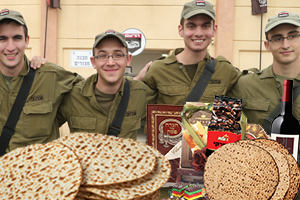

Beit She’an, located in the Jordan Valley some 20 miles south of the Sea of Galilee, houses some of Israel’s most spectacular archaeological finds. Scholars believe that the history of the city goes back 5,000 years and contains over 20 layers of human civilization.
To begin to get a sense as to how ancient the Land of Israel is, there’s no better place to visit than Beit She’an, one of the country’s oldest cities. The town was first built on a hill, rising above the banks of the stream of Nahal Harod. It was always of strategic importance as it sits at the junction of the Jordan River Valley and the Jezreel Valley, essentially controlling access from the interior to the coast, as well as from Jerusalem to the Galilee. This strategic position made it one of the major cities in ancient Israel.
The Bible mentions Beit She’an as one of the Canaanite cities which were not conquered by the Israelites under Joshua (Joshua 17:1 1-12; Judges 1:27). The city is again mentioned after the defeat of the Israelite army of King Saul by the Philistines on Mt. Gilboa (south of the city), when they impaled the bodies of King Saul and his sons on the walls of Beit She’an. (I Samuel 31:10-12). The city became part of the kingdoms of David and Solomon, and was eventually destroyed in a fire, apparently at the hands of the King of Assyria in 732 BC. After the Arab conquest, it sank to the status of a small town. Upon the establishment of the State of Israel, the town was resettled and new immigrants came to live here.
Today, the city numbers some 18,000 inhabitants. Driving up to Beit She’an is like taking a trip back in time. You will encounter an ancient theater that is still in use today; the largest public bath house ever excavated in Israel; two streets whose colonnades are still visible; the ruins of a Roman temple; a large Roman-era public building in the center of the city and many more relics of empires past. The ancient city’s ruins are now protected as an Israeli national park, known as the Beit She’an National Park.
An interesting way to visit the park is from the west. Get off at the bridge on Route 71, where it crosses Nahal Harod, and then walk along the dirt track above the stream to the top of Tel Beit She’an. Besides the remnants of ancient civilizations, flowing springs are another popular attraction. The biggest one in the area is known by its popular name “The Sachne”. This park was chosen by Time Magazine as one of the 20 most beautiful sites in the world. Another natural park in the area is Ganey Chugah, which consists of a natural spring forming three big swimming pools, surrounded with grass and shady spots.
Written by Gidon Ben-Zvi, Staff Writer, United with Israel
Send Passover Packages to Needy Israeli Soldiers - Bring Them Joy!
We are honored to thank the young men and women of the IDF who risk their lives every day to protect the citizens of Israel. Since October 7th, soldiers have been on the battlefield for months - many are hoping to come home for Passover.
Join us in sending Passover food packages (and personal notes) to Israeli soldiers and their families.
Many soldiers spend the Passover holiday with needy families back home. The soldiers greatly appreciate your love and concern. Bring them Passover joy!
CLICK HERE TO SEND YOUR PACKAGE AND NOTE TO ISRAELI SOLDIERS!



